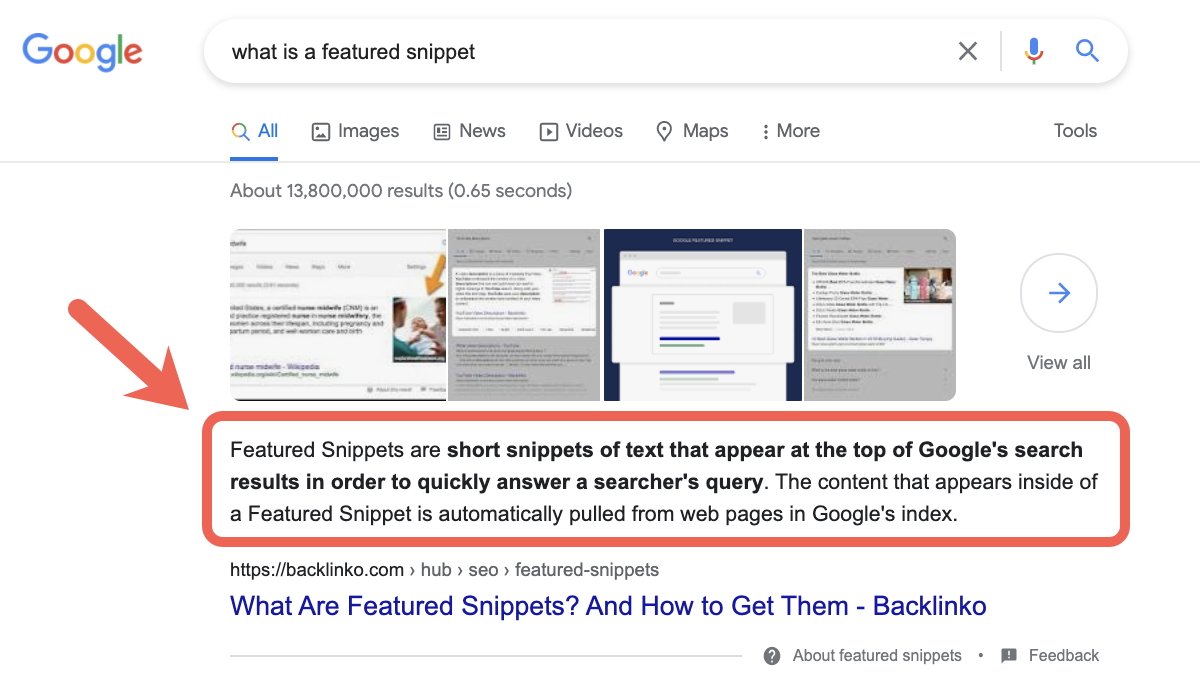To be competitive in search, your SEO strategy should account for semantic search. In this article, you’ll learn more about what Semantic Search is, why it’s good for SEO, and how you can use this strategy to better appeal to search engines and improve your search visibility. By now, you have probably noticed that Google has gotten pretty good at this game.
Whilst, understanding and answering the questions you ask. It wasn’t always that way, but in recent years the search engine has rolled out numerous updates to improve the understanding behind the intent of a query that is typed into the search engine. In simple terms, the semantic search was created to better understand search intent.
It’s normally achieved through a search query’s contextual meaning. Semantic search drives an enhanced level of understanding behind the meaning of search queries. And, let’s not forget one thing that many SEOs often forget.
Perse, the thing is this; 15% of searches have never been made before, including returning results that are both more relevant and personalized. In short, the main thing to understand is that semantic search uses the intent, query context, and the relationships between words to produce the most accurate search results. Now, let’s learn more in detail.
What Is Semantic Search?
By definition, Semantic Search (Semantic Web) is a data searching technique in which a search query aims to not only find keywords. More so, to determine the intent and contextual meaning of the words a person is using for search. Semantics refers to the philosophical study of the meaning of search phrases when serving content to users on the web.
It’s true that philosophy rarely rhymes with software engineering, but this concept does help us reach a definition. Indeed, Semantic Search is related to figuring out what your target web user means. At one time, search engines could only analyze the exact phrasing of a search term when matching results with a search query.
As of now, search algorithms are more sophisticated. Thus, in terms of SEO, they are able to incorporate semantic search principles when ranking content. In fact, this type of search makes browsing more complete by understanding almost exactly what the user is trying to ask, instead of simply matching keywords to pages.
The two primary factor elements that guide semantic search are:
- The search intent of the user. Search intent is the reason why someone performs a query on a search engine. It relates to what the user is trying to accomplish. Search intent could be to learn, find, or buy something. By considering the intent of users, search engines can provide more relevant results (question answers, product page, brand’s website, etc.).
- The semantic meaning of search terms. Semantics is the study of meaning and relationships between words. In search, semantics relates to the relationships between a search query, the words and phrases related to it, and the content on web pages. By considering semantics (what the words mean, not just what they are), search engines can display results that are more closely related to the context of the search query.
In a nutshell, the semantic web is all about giving users the best internet experience possible. It tries to address user intent and aims at making it easy for search engines to serve user intent on results by decreasing, maybe ultimately eliminating, the reliance on hyperlinks and documents as the means to information retrieval.
To understand the history of semantic search, you need to understand the history of search. When search engines first started, keywords were the main ranking factor. Usually, a page that repeated the target search term the most times would get top placement on Search Engine Results Pages (SERPs). There are a few steps that govern semantics.
Step #1: The System Wasn’t That Great Initially!
This system was easy to manipulate and resulted in low-quality content that was written for search crawlers instead of users. For example, to rank for the phrase “content marketing,” a marketer could create a piece of SEO content that keeps repeating the phrase. This strategy is called keyword stuffing, and it resulted in a poor user experience and low-quality results.
The old search system also made it difficult for users to find relevant information because search engines couldn’t properly decipher the context and meaning of search queries. They could only analyze and produce exact match results. For example, a search for “How do I start content marketing” might return results for “How do I start content writing” or something even more irrelevant. So, semantic search benefits both users and search engines alike.
Semantic Search Is Useful In These Ways:
- It’s difficult to use black hat SEO to manipulate search results — limited to spam and low-quality content
- Search more intuitively and help users find results that more closely match what they are looking for
But, this is not the end! Continually, search engines are always refining their algorithms. Whilst, improving their results and providing better experiences for users. And, as such, there are three other factors to consider too.
Some of these factors include featured snippets and rich results, Hummingbird & RankBrain algorithms, voice search technology, etc. Not to mention, back in 2012, Google introduced Knowledge Graph to help users “discover new information quickly and easily.” It leverages semantic search to decipher the meaning.
And, as a result, it helps users find the information they want as fast as possible. It was also the beginning of Google’s shift towards providing more answers directly on SERPs. Google now displays content from web pages as Knowledge Graph results, rich results, and featured snippets to surface answers faster and more prominently.
Knowledge Graph Search Results
Rich Search Results Example
Featured Snippet Search Results Example

With that in mind, intent search has never been so conversational! Especially, with the development of a variety of features. Such as featured snippets, voice search, and image search technology. As well as the birth of a Google algorithm update back in 2013 known as Hummingbird — which is also closely related to Google’s RankBrain update.
Linked Data Featured Snippets
This is a way of structuring information in a complex way that computers can understand. As mentioned, a good example is Google’s Knowledge Graph. This is a huge database that Google uses to enhance search results. This database adds facts to topics like places, things, and even topics of interest. This helps to serve more relevant results, with regard to user intent.
When you search for something on a search engine like Google, sometimes you see a result above the rest in a block. More so, with a summary of the answer and a link to the website, it is derived from. This is what we refer to as a featured snippet. In short, Featured Snippets are short snippets of text that appear at the top of SERPs like Google’s search results.
Perse, in order to quickly answer a searcher’s query. The content that appears inside of a Featured Snippet is automatically pulled from web pages in Google’s index. As of today, they are quite many. But the common types of Featured Snippets include definitions, tables, steps, and lists.
Voice Search Technology Revolution
Another factor impacting semantic search is the rise of the voice search technology revolution. As more and more people speak their search queries to virtual assistants like Alexa and Siri, search engines are evolving. More so, in order to recognize the semantic, conversational nature of their searches. They tend to use more natural language, longer phrases, and more questions.
The best way to understand voice search is via software agents like Apple’s Siri and Google Now. Siri acts on behalf of the user to achieve multiple tasks online, thus becoming a software agent, a term Tim Berners-Lee first used when describing the semantic web. It can help you book a hotel reservation, for instance. All you need is to ask it, verbally.
Google Now, like Siri, can make recommendations for a hotel room and predict user needs. An important thing to note is that these software agents are able to work across different devices, from smartphones to vehicles. This is a key pillar of the semantic web. These machines, in essence, communicate with little human intervention.
This achieves Berners-Lee’s vision of a web where humans and machines can cooperate. That’s why, as of today, a majority of search engines like Google and Bing are heavily relying on semantic search principles. Particularly, in order to provide relevant results for these types of searches.
Hummingbird And RankBrain Algorithms
Google is constantly refining its search algorithms to provide a better and better experience for users. Releasing updates and adding ranking factors to its algorithms help make search results even more accurate. Back in 2013, Google released the Hummingbird update which placed greater emphasis on natural language queries.
As well as the principles of semantic search. Then again, in 2015, they launched RankBrain, which started using artificial intelligence to learn and analyze the best-performing search results. Together, Hummingbird and RankBrain moved search further into prioritizing user intent and semantics as ranking factors.
Step #2: The World Wide Web (WWW) Was Unlike Today!
In order to understand the semantic web, we need to understand where the web is today. The web is basically arranged as documents “hyperlinked” to each other. When you search for particular information, Google’s bots have to “pick up” different pieces of information and deliver them to you, the user.
Unfortunately, computers and devices do not understand this information. In the following search results screenshot, you can see that Google understood I was searching for the best doctor near me. And, it delivered results of doctors with excellent ratings that are near my current location as illustrated.
The semantic web arranges data and information in a structure referred to as “ontologies”. This way, information that is related is stored as a cluster or a taxonomy. This makes it easier for computers to deliver more relevant information, as they “understand” that–for instance–a doctor has consultancy hours, professional qualifications, and even user reviews.
His practice serves a particular area too. If you are looking for “the best doctor” around your neighborhood, it is easy for Google bots to understand and retrieve this information. But, the big question is this; how did the semantic web come about? Well, let’s try to understand that further below.
How The Semantic Web Came About—How The Search Works
The semantic web was born when Tim Berners-Lee (founder of the World Wide Web) presented a web that could provide a better “online experience” during the first World Wide Web conference in 1994.
The concept became popular later through an article he published in May 2001, in the Scientific American Magazine. Another article in May/June 2006 by Berners-Lee further emphasized the vision. Essentially, Berners-Lee saw a future where humans and computers could cooperate, allowing machines to better process and understand the data they previously could only “see”.
We are already experiencing semantic search, even if you don’t recognize the term. Semantic search helps in the delivery of more accurate search results by considering user intent, relationships between words, and contextual meaning. Today, advancements in search mean that this dotted line between point A and point B is not as simple.
According to bloomreach, the user intent is based on a mix of factors, such as location or the user’s past history. Along with creating links between the words in the query, this personalizes the search to make the experience relevant to your user. We, humans, rely on context in the real world while speaking and interacting.
Learn More: Why Search Intent In SEO Is An Important Marketing Element
If I were to ask you, “do you like this article?” And then, I get a little insecure and press again with “Oh yeah? What do you like about it?” You would know that “it” is referring to the article. There’s an endless context impact in our daily talks. For one thing, it’s not only linked to what has been previously said or what followed.
In fact, the setting and time in which the conversation takes place, the people’s background knowledge, and the level of relationship they have established, all play a role in conversations. These are the types of contextual attributes that semantic search is emulating. That’s the reason why when you type in “restaurants” on your search engine, it gives you a nearby restaurant list.
In a way, this is to smooth the transition between the way users interact with people versus the way they interact with search results. Therefore, semantic search adds a level of understanding to queries, but these algorithms also have learning patterns. Through bounce rates, conversion rates, and other types of indicators, these algorithms can improve user satisfaction.
More so, to better match keywords and pages. Semantic Search is, therefore, strongly linked to Machine Learning, in that it uses past data and trial-and-error patterns to enhance your user’s experience.
Why Semantic Search Matters In Web Results Query
First and foremost, you want your user to feel listened to. Even though from your perspective, the end goal for your user to be on your platform is to finalize a transaction. But, the user can’t feel as though that’s the only aspect being emphasized. They’re going to want to browse around—look at your catalogs. And, most importantly, find what they’re looking for straight away.
If they find the product or information they want easily, they may spend that extra time saved browsing around your site. And if during that period, the user discovers new products or content that perfectly match their tastes, your Average Order Value is likely to go up. The easier it is to navigate your site, the more time users will spend on it—the better your conversion rates will be.
Learn More: 7 Ways To Use Semantic SEO For Higher Rankings
Secondly, there is the need for personalization as well. Personalization refers to making every user’s experience feel unique - and site search can help with that. For example, let’s say a user has shown interest in female products (e.g. skirts, dresses, bikinis, etc.) and then searches for generic terms like “shorts”, “shirt”, and “exercise shirt.”
In that case, some site search technologies will give preference to female items as the user is more likely to be female. The experience of each user is personalized in regard to the preferences that they have shown in the past. This is what Semantic Search has as its main goal:—making it easy for your users to find what they’re looking for.
Technically, this goal can take multiple forms. If they make a typo on the search bar, the item they requested still shows up. If they look up “red“, all red items will show up. They shouldn’t feel like searching for an item requires brainpower on their side. It should be seamless! In fact, it should be the other way around — be focused behind the scenes.
Read this next: 8 Capabilities of Best-in-Class Site Search [white paper]
The semantic web allows for information retrieval by the use of relationships between words and concepts in different taxonomies, or what we referred to as ontologies by some professionals. This way, the results served are more specific or relevant to the user’s intent. Basically, understanding Semantic Search is a very essential way for webmasters.
More so, in order to get a maximum amount of traffic and conversions. You want to understand how the space works before you play a role in it. Giving attention to the digital experience you offer your users garners trust. They will remember how efficient it was to shop on your site and think about coming back.
That’s why driving traffic to your site is only part of the picture. The more important side is to make your digital presence as seamless and attractive as possible. One path to building this trust—specifically for retailers, distributors, and businesses with generally larger product catalogs—is by implementing smart search on the platform itself.
How User Intent Affects SEO In Relation To Commerce
It’s simple:—the more relevant and understanding user searches are, the better your conversion rates are. In fact, semantic search is possible wherever there is a search bar. And some of the most used search bars are search engines themselves. In some ways, SEO experts of the past, pre-semantic search, had a rather simple task.
For instance, let’s say I want users to go from point A, their computer monitor with a search engine window opened, to point B, my website. With this simple model, there are not a million ways to go about it. The search was based on relevancy (by keywords) rather than meaning. This is why we were used to keyword-stuffed articles in the early 2000s.
Articles that were designed to appear first on a Search Engine Results Page (SERP), rather than serving information the user is really looking for. With an increasing amount of competitive digital platforms—that have implemented intuitive searches—the standard has reached a new peak. Your average user has a new set of expectations.
Learn More: What Is Keywords Search? A Step-by-step Beginners Guide
But, most importantly, through increasingly relevant searches, they have unmatched access to information. How we buy things in real life is often based on the asymmetry of information between buyers and sellers. Or rather, how often you buy a brand new pair of binoculars for your annual bird-watching trip in the Alps.
As well as that day later you walk by a different store with the exact same binoculars but for 10 euros less. This will almost disappear from eCommerce as search technology evolves. It’s becoming too easy for the average user to find exactly the product they want at the price they are willing to pay for it.
In short, eCommerce is shifting towards a place where it is the customer who has the power. This power is the result of features such as personalization and suggestion-based browsing. Or, as previously shown, of the incredible access to a widespread amount of information.
The Best Web Practices For More Users Traffic Conversion
Overall, semantic Search was one of the key elements that created this new customer experience era. And now that the ball is (most of the time) in the customer’s court, your focus should be on making their experience—online and offline—as simple and as beneficial to them as possible.
Optimizing for search is still about indicating relevance. All the authority in the world won’t help you if your page isn’t obviously relevant to your topic. So you still have a primary phrase and you still use that phrase in the title, header, and body text. The basics of on-page optimization in SEO don’t change with semantic SEO, with two exceptions.
First, use those related phrases through your research wherever relevant. Probably, they’re big ideas that you’re adding in, so it would be natural to include them as subheads (h2 – h6). Second, adapt your content to natural language search, by including full sentences that contain the complete meaning.
Include the complete question with the complete answer. In other words, don’t break up your meaning across several sentences. Below is a myth-buster analogy that you need to realize as an SEO or Webmaster.
Back Then: We Foresaw the Future of Semantic SEO
Semantic search engines are here. So it’s key to optimize your content for them. You can do this by using phrases that are related to your main topic. That’s what semantic search optimization is all about!
And Now: We Are Talking of the Semantic SEO
Semantic SEO is the art and science of adapting your content to rank within semantic search engines. It involves targeting topics, not keywords, by including semantically related phrases within your content. On that note, you should try and write like you’re writing for the dictionary. This tactic may also increase the chances that you’ll appear in the answer box.
Notably, semantic search is an important and useful ranking factor that is only going to get more influential. And, as you develop and execute your SEO strategy, use the following best practices to optimize your content for semantic SEO:
#1: Move with the speed of SERPs algorithms change
Before Hummingbird, specific keywords were used to help pages rank in search results. This led to some Black Hat SEO tactics, such as cramming your site with as many keywords as possible (aka keyword stuffing). Oftentimes, this practice translated to a terrible user experience. With new updates, the top-ranking pages match both user intent and context.
Rather than those with the particular keywords that users type in search engines. Likewise, as you can recall, RankBrain is similar to Hummingbird. But, it is a machine learning system that helps to interpret queries. It also analyzes Google’s index to look for pages with specific features that would be a good fit for the keyed in a query.
These features include pages that rank high in search results based on factors like click-through rate and time spent on the page. This update makes sure that the user is being delivered a page that matches the motivation behind their search. Let’s say a user is asking a question, like “should I feed my dog organic food?”
In this case, the results page should feature answers to that question. Rather than sites that offer their users just an ordinary way to buy organic dog food. Following its key algorithms change, Google now uses its powerful featured snippet tools to drive its results through its SERP quite a lot.
Learn More: What Are Algorithms? Their Role In Maths, Computing & SEO
These are the results you’ll see above the rest in a block format. More so, with a summary of the answer and a link to the website that it is derived from. Google chooses these featured websites based on one main fact.
And, that’s non-other than how well the featured snippets address the ease of user intent. If your site is featured, you will definitely get higher traffic — leading to more conversions — based on what your site is about. You should also note that; if your site is featured, it’s likely because you are addressing a specific query in the most suitable manner.
Meaning, as you can probably tell, preparing your site for semantic search is really important. After all, this is the direction in which SERPs like Google are moving towards. User experience is really important. That’s why many search engines are trying to make sure visitors are getting exactly what they are looking for — whenever they search online.
#2: Think about your web topics first — not just the keywords
Absolutely, keyword research is the ultimate in data-driven empathy. And building search-optimized pages that answer questions in detailed ways is still an amazing way to attract an audience. Want to adapt to semantic SEO?
Well, there is an additional step. We have to go beyond choosing and using a phrase. We have to build up relevance for the topic by finding those semantically connected phrases and building up relevance more broadly. Don’t just research keywords, research topics. Semantic search has made topics, not just individual keywords, very important.
Search engines strive to serve the most valuable and relevant results to users, so the content must be more comprehensive and informative than ever before. The key now is to optimize for the topic, not just the phrase. Surprisingly, Google is much better now at understanding the intent of the searcher and the true meaning of the phrase.
Therefore, we too, need to adapt by thinking beyond the phrase, beyond that combination of letters and words. We need to cover the topics in our writing more broadly.
Our thinking then:
- Pick a target keyphrase
- Use it in your title, header, and body text
- Maybe, sprinkle in a few related grammatical forms
- Hopefully, rank for the phrase
Our thinking now:
- Pick a target phrase
- Find the phrases that are semantically connected to that phrase
- Consider those phrases as you plan the scope of your SEO content
- Use the target phrase and those semantically connected phrases throughout your article
- Make sure you are answering as many questions related to the broader topic as possible
- Hopefully, rank for the phrase and the many related phrases
Is it harder to take this approach? Well, it’s more work, but it’s not harder work. Actually, the research piece often makes the writing piece easier. And in my opinion, it’s more fun. In that way, semantic search benefits readers greatly. Why?
Because it has resulted in highly targeted, useful content. Instead of creating short, shallow pages of content for every variation of a broad search term, consider creating one comprehensive evergreen guide for the entire topic. Use keyword optimization best practices to ensure your content is fully optimized for both search engines and readers.
#3: Match content to complement the user search intent
As you develop content ideas for the SEO keywords you want to target, think about why a user would search for that phrase. Consider what type of keyword it is. As well as what type of search intent it represents. There are several ways to find those phrases that are semantically related, deep inside the heart of Google.
First, just start typing your primary target keyphrase into Google. Notice how it begins suggesting search terms? As you slowly type in each letter, you’ll see more. Secondly, type in another letter as if you’re starting a new word. Try entering a question word at the beginning of your phrase. You’ll soon find a wealth of words connected to your topic.
Consider these types:
- Informational keywords: The user is trying to learn something, so they use “know” keywords to look for information and get answers to their questions.
- Navigational keywords: The user is trying to navigate to a specific site or find a specific item, so they use “go” keywords to find the website for a familiar brand or thing.
- Transactional keywords: The user is trying to make a purchase, so they use “do” keywords to find a product to purchase or a page to make a transaction.
Use the shortcut! A fast way to find all of the phrases is Keyword Tool (aka KeywordTool.io). It suggests every phrase Google would suggest as if you typed in the next letter of the alphabet 26 times. You can even use competitive analysis tools to find even more related phrases. Search for your main target keyphrase again.
See the top-ranked page for your target phrase. That page likely ranks for many dozens of related phrases. Usually, to find a list of all the phrases for which that page ranks, you can put that top-ranked site into a rank-checking tool such as SEMrush as well. You should note that; although the free version gives you some data, the paid version gives you all of it.
#4: Include related keywords — both long and short — in your content
Important to realize, search results clues for keywords are everywhere. Every act of keyword research reveals related phrases, suggested phrases, and semantically connected phrases. If there was no semantic connection, those phrases wouldn’t be recommended. As you do your keyword research, build a list of these phrases.
Then review the list, step back, and reconsider your topic. By the same token, you should also ask yourself a few questions that will guide you in your Semantic SEO strategy.
Ask yourself questions like the following:
- Which of these phrases would fit into the article you were planning to write?
- Would a set of these phrases work better for a related article?
- Should I have something separate that could link to the original?
Probably, you’ll conclude two things: Your article is going to be way more detailed and comprehensive than you’d originally planned. You’re going to publish another topic or two and build up a small family of content. You just discovered how SEO can make you a better writer. Surprised? Well, try to serve the “semantics” part of the term.
In particular, by adding related or LSI keywords to your content. LSI Keywords, or Latent Semantic Indexing Keywords, are phrases that are closely related to your target keyword. They give context to your content and help search engines better understand what your content is about and how it serves audiences.
To create content that is optimized for semantic search, find related keywords and use them a few times throughout your content. However, while doing so, there are a few things you should always keep in mind.
Consider the following research data statistics:
- 80% of online searches are people looking for answers
- 10% are people looking for a specific product or service
- 10% are people trying to get to a specific website
In reality, Semantic SEO is especially relevant for that big, first group of searches for they want quick answers.
#5: Optimize your content for featured snippets—structured data
Search engines like to display rich results that give users the information they want directly on SERPs. In the beginning, short-tail keywords were the order of the day. Unfortunately, not that much, as of today. To increase your search visibility, optimize your content for answer boxes and paragraphs, lists, and table-featured snippets.
Clearly answer questions in your content, target long-tail keywords, and use formatting to make your information an attractive option for featured snippets. With semantic SEO, everything is automatic! When you target the topic, you target all the questions that are answered by your page, many of which will belong to specific phrases.
So the “long-tail” SEO happens by itself. You’ll be targeting dozens of long phrases that you probably never thought of. When you target the topic, you’re targeting many of the dozens of long-tail keyphrases that the topic addresses.
Learn More: Featured Snippets | Why Are They So Important For SEO?
Always remember, semantic SEO and long-tail SEO are one and the same. Another way to help search engines understand the meaning and relevance of your content is through structured data. Not forgetting, structured data or schema markup is a form of microdata that adds additional context to copy on a webpage.
It uses a set of standard data structures that categorize content for search engines. For example, the structured data for a book might tell search engines that “Epic Content Marketing” is the book title, and Joe Pulizzi is the author. This extra information helps search engines rank content, and identify information that can be displayed in rich search results.
#6: Consider how you structure your content—layout, and lengthwise
Longer content will still perform better in search. Your goal as a search marketer is simple. Make the best page on the internet for your topic. And, it’s hard to do that in 400 words. If you sit down and make a sincere effort to create the most thorough and detailed piece of content on your topic, you will likely lose yourself deep in the topic. You’re about to go big.
Short-form content might work great in certain channels. Highly visual, scannable content with light text and heavy images is great social content. Short-form content can work well in email. But in SEO, short-form content is risky. If your goal is to provide a short answer, you’re probably competing with Google.
Learn More: What Is Keyword Density? How To Use The Right Keywords
Every day, Google.com is providing richer search results, answering short, simple questions right there on the search engine results page (SERP). They’ve scraped the content from the websites (often with the help of web developers who tagged the content with SEO semantic markup using schema.org micro formatting) and shown it to visitors right there.
Who needs to click? There are thousands of websites that show stock prices. But why visit them? When the 2016 summer Olympics was a trending topic, a lot of websites showed the medal count. But who clicked on them? Marketers beware; short content answering short questions is not a sustainable SEO strategy.
#7: Answer any related questions you’ll find in the SERPs suggestion
The main role of Google is to answer questions from the overall web users. It’s one of the main reasons people use it. With this simple understanding, a great way to adapt your content to the future of search is to find the questions related to your topic and answer them in your content.
It sounds so straightforward, but a lot of content marketers miss this simple trick. For your information, the questions are everywhere. Keep your eyes open as you were searching for the related phrases in step one. Having said that, below is a sample of what you may see while searching for a term like ‘web design‘ as other suggestions.
Another fun source for questions is a tool like that one by the AnswerThePublic team. With this tool, you’ll get instant, raw search insights, direct from the minds of your customers. All you’ll need to do is just enter the topic and it will scrape the web for dozens of related questions.
BuzzSumo (highly recommended), is yet another more powerful, more complete source of questions—especially while using its paid version. The question analyzer finds questions asked in Quora, Reddit, Stack Exchange, and any niche site related to your topic. Once you’ve found the most relevant related questions, make sure to answer them in your content.
#8: Use a powerful tool such as Bloomreach
Bloomreach is a powerful content, customer engagement, and product discovery tool. Whilst, offering to achieve true personalization and drive unparalleled business growth. Technically, the flagship product brX uses is quite worthwhile. It’s one very great example of a natural language processing and semantic understanding tool.
More so, in order to learn your customers’ intent and create relevant suggestions for users that match the commonly-used language. Paired with revenue-optimized autosuggest, Bloomreach offers the fastest route to find the products your customers are looking for. Wondering how their customers use brX? You can check out what others say.
Consider the following Bloomreach success stories:
- Torrid Helps Customers Find What They Want with Self-Learning Site Search
- Annie Selke Increased Revenue Generated from Search by 40%
Whether it’s a marketer struggling to understand their customers, websites that display irrelevant content, or site search that’s disconnected from rich product data and customer preferences, these are the main gaps that demand filling.
For one thing, they result in customers who take their business elsewhere—no matter how hard your eCommerce teams try to retain them. In that case, all you’ll need is to connect the dots. Whereby, Bloomreach will connect these dots for you—by putting essential eCommerce functionalities under the same roof.
The 3 Main Bloomreach Commerce Experience Cloud Features Include:
- Engagement: Realize the true magic of customer data through the delivery of engaging, consistent, and tailor-made experiences across all digital touchpoints.
- Discovery: Quickly match your customer to the perfect product with AI-powered site search, SEO, recommendations, and product merchandising.
- Content: Capture more revenue and achieve real personalization with an API-first, headless content platform flexible enough to power any front end.
Bloomreach is dreaming and building the next wave of commerce. Whatever the case, you can rest assured to deliver real-time, scalable personalization. While, at the same time, delighting your customers and driving a lifetime of brand loyalty. Want in? They’re ready for you (you can either get a demo or learn more about their usefulness first).
#9: Embrace the most important properties of Web3
Generally, in the era of advanced technology pioneered by Artificial Intelligence (AI) and the Internet of Things (IoT), the web has not been left behind. There is a move towards creating a more relevant online experience. The future of SEO is that’ web users will receive more relevant results on the search, faster. All is possible through the web 3.0 concept.
The results served are also becoming much more relevant to the users’ search intent. Web3 (3.0) is the third generation of internet services for websites and applications that will focus on using a machine-based understanding of data. Especially, to provide a data-driven and Semantic Web. The ultimate goal of Web 3.0 is to create more intelligent, connected, and open websites.
Learn More: What Is Web 3.0? The Key Properties Of Web3 To Know
While Web 2.0 refers to sites and apps that utilize user-generated content for end-users. The difference between Web 2.0 and Web 3.0 is that Web3 is more focused on the use of technologies like machine learning and AI.
More so, to provide relevant content for each user instead of just the content other end users have provided. On one hand, Web 2.0 essentially allows users to contribute and sometimes collaborate on on-site content. On the other hand, Web 3.0 will most likely turn these jobs over to the semantic web and AI technologies.
If the trend of change is traced from Web 1.0, a static information provider where people read websites but rarely interacted with them, to Web 2.0, an interactive and social web-enabling collaboration between users, then it can be assumed that Web 3.0 will change both how websites are made and how people interact with them.
#10: Make sure you consult with the leading SEO webmasters
Finally, for your site to be able to create a better online experience for users, it needs to be optimized for search. In this article, we’ve discovered how the semantic web emerged and how it helps meet user intent. As well as why it’s important for your site, and how to prepare for it.
When I was an SEO beginner, search engine optimization was simpler. Pick a target phrase and use it on the page. Put it in your title, header, and body text. Pretty straightforward. These are still (and will always be) the SEO basics. Definitely, the Semantic Search shift has made SEO more subtle, more complex, and more interesting.
Today, search rankings aren’t just about choosing and using a target keyphrase. It’s about the broader meaning of that phrase and the intent of the searcher. Keyword research is critical to semantic SEO, maybe even more so than before. Before, it was the quantifiable way to discover demand and competition for your topic.
Equally important, as of now, it also informs the content planning process. So, while the act of keyword research has changed a little bit, the value it adds to the end results has increased. With that in mind, what’s your take on this topic?
Summary Notes:
Motion UI is also a proven way to capture users’ attention. So, it is useful for those who develop products for markets with lots of players. On the other hand, in a highly competitive market such as the digital online one, it’s important to foresee changes and adapt to them. This is why we keep track of Web Development trends new every day.
We are sure the above guide is a great start for you. But, to go even further, you’ll need us, whereby, our able team provides all-inclusive online digital service solutions to all key clients. We’ve got everything for all! Big or small, startup companies, eCommerce businesses, retail stores, digital agencies, government entities, to even fortune five brands.
Related Topics:
- Social Media SEO
- Site Taxonomy SEO
- How Niche Marketing Is Done
- Steps To Do Market Research
- Digital Marketing Strategy
We offer all our customers quality Service Solutions like , , , , , , , , Security, etc. On one hand, the motion future of Web Design seems to be still appealing as SASS libraries are flexible, easy to use with CSS, HTML, and JavaScript, and highly responsive.
That said, if you’ll need any help, you can always Consult Us, and our Creative Content SEO Webmasters will be more than glad to sort you out. You can also share your additional opinions thoughts, suggestions, recommendations, contributions, or even questions in our comments section below. You can also donate to support what we do.













I simply desired to appreciate you once again. I’m not certain what I would have accomplished in the absence of those advice discussed by you regarding my subject. This has been a real frightful matter in my circumstances, but being able to see the very well-written technique you handled it took me to cry over happiness. I will be happier for the information and wish you comprehend what a powerful job you were undertaking instructing others using your websites. I am sure you’ve never got to know all of us.
We are glad to know that our readers find our weblog content resourceful.
We’ll keep more coming and hopeful, help find whatever you are looking easy to find.
Comments are closed.